《1 Introduction 》
1 Introduction
The Yangtze River Delta (YRD) region, occupying Shanghai, Jiangsu, Zhejiang, and Anhui Province, covers a total area of approximately 3.58×105 km2 . As one of the most economically active, open, and innovative regions in China, the YRD region has strategic significance in country’s modernization and development. In November 2018, Chinese President Xi Jinping announced a national strategy for the integrated development of the YRD at the first China International Import Expo and emphasized building a modern economic system. In December 2019, the Outline of Regional Integrated Development Plan for the Yangtze River Delta was published, drawing a blueprint for the integrated development of the YRD and putting forward the development goal for the completion of a modern economic system by 2035. Undoubtedly, modern economic systems require the support of a modern energy system. In recent years, the energy sector in the YRD region has made remarkable achievements continuously; however, it still faces several challenges, such as guaranteeing the supply, improving the quality, enhancing the efficiency, optimizing the structure, and cleaning the utilization. Therefore, it is necessary and urgent to promote the revolution of energy production and consumption in the YRD region and build a clean, low-carbon, safe, and efficient energy system to support the construction of the modern economic system.
《2 Characteristics of the YRD’s energy system》
2 Characteristics of the YRD’s energy system
The permanent population in the YRD region reached 2.27×108 in 2019 [1], accounting for 16.2% of the total population of China. In the same year, the regional Gross Domestic Product (GDP) of the YRD was approximately 2.37×1013 CNY [1–4], accounting for 23.9% of the national GDP [5], and the per capita GDP was 1.47 times the national average [1]. However, the YRD region covers only 3.7% of the China’s land area, indicating that the YRD’s energy system has enabled rapid economic and social development in the region. The energy system of the YRD region is still facing problems, such as unbalanced energy supply and demand and sub-optimal energy structure.
《2.1 Energy resources are relatively scarce, and energy supply is highly dependent on external transfer-in》
2.1 Energy resources are relatively scarce, and energy supply is highly dependent on external transfer-in
In terms of the fossil energy, the YRD region has low reserves of coal, crude oil, natural gas, and other fossil energy resources, resulting in limited local self-produced fossil energy. In 2018, the coal, oil, and natural gas production and the demand in the YRD region had a gap of approximately 4.8×108 t, 1.06×108 t, and 5.17×1010 m3 , respectively. As shown in Fig. 1, the sum of imports and transfer-in of coal, oil, and natural gas from other provinces accounted for 79.1%, 98.3%, and 95.1% of the total consumption of coal, oil, and natural gas, respectively. In the YRD region, coal mainly relies on transfer-in from other provinces, oil relies on imports, and natural gas relies on both [6]. Although coal resources in Anhui Province are relatively abundant in the YRD region, they still need to be transported from other provinces to meet the demand. The development potential of the renewable energy in the YRD region is also limited because it falls into the category IV wind energy resource area [7] and III solar energy resource area [8]. In terms of external electricity, the net transfer-in electricity in 2019 was 3.36×1011 kW·h, accounting for 22.6% of the total electricity consumption in the YRD region [9]. Anhui is the only province in the region with a net transfer-out of electricity.
《Fig.1》
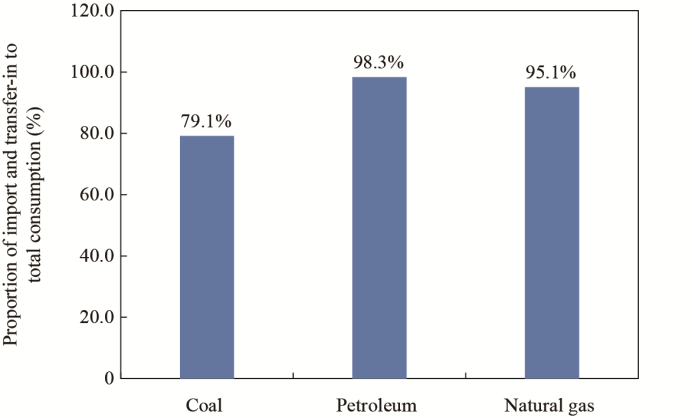
Fig.1. The external dependency of the energy in the YRD region in 2018.
《2.2 Fossil energy dominates the energy consumption structure》
2.2 Fossil energy dominates the energy consumption structure
Fossil energy accounts for a relatively high proportion of the energy consumption structure in the YRD region. In 2018, coal consumption in the YRD region was about 6.07×108 t, oil consumption was 1.08×108 t, and natural gas consumption was 5.44×1010 m3 [6], accounting for 15.9%, 17.7%, and 20.0% of the national consumption, respectively. As shown in Fig. 2, the fossil energy accounts for approximately 89.4% of the total energy consumption, of which coal accounts for 55.4%, oil accounts for 27.2%, and natural gas accounts for 6.8%. The non-fossil energy accounts for approximately 10.6% of total energy consumption in the YRD region. Primary power generation from solar, wind, hydro, and nuclear resources in Zhejiang Province reached 8.98×1010 kW·h in 2018, and that in Jiangsu, Anhui, and Shanghai was 5.68×1010 kW·h, 2.08×1010 kW·h, and 2.38×109 kW·h, respectively, accounting for 25.8%, 11.1%, 7.6%, and 2.8% of total electricity generation [6].
《2.3 Energy equipment manufacturing industry is powerful》
2.3 Energy equipment manufacturing industry is powerful
The equipment manufacturing industry is represented by nuclear power, gas power, high-efficiency and clean coal power, and renewable energy, such as photovoltaics and wind power, which is developing strongly in the YRD region. Specifically, relying on regional nuclear power bases, a relatively complete nuclear power industrial chain has been formed, and a group of powerful leading companies has formed with mass production capacity and market competitiveness. Gas turbines and ultra-supercritical equipment manufacturing industries also have good independent research and development capabilities in the YRD region. Additionally, the wind power equipment manufacturing industry in the YRD region has a complete industrial chain. In 2018, the cumulative installed capacity of offshore wind power manufacturing companies in the YRD region accounted for more than 70% of the national capacity [10]. Photovoltaic manufacturing industry is mainly concentrated in the midstream and downstream of the industrial chain. More than 50% of inverter, module, and battery manufacturing companies are located in the YRD region.
《Fig.2》
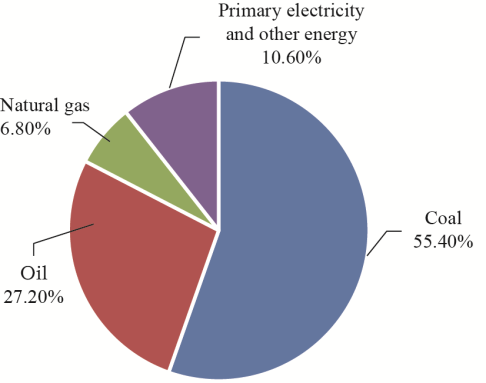
Fig.2. The energy structure of the YRD region in 2018 [6].
《2.4 Electric power system reform is promoting steadily》
2.4 Electric power system reform is promoting steadily
Electric power system reform is steadily promoting in the YRD region. The three provinces and one city in the YRD region have finished building their power trading centers and electricity sales companies, which promoted the regional direct electricity trading volume. The pilot reform of provincial grid power transmission and distribution prices in the YRD region began by announcing the specific power price. There have been 48 business pilots of the incremental distribution network in the YRD region, establishing the competition mechanism of the retail electricity market. The newly established Zhejiang Power Spot Market is the first power spot market established in a province with a net energy input from the State Grid Corporation of China.
Moreover, the electric power system reform in the YRD region needs to be further deepened. For example, because an effective market mechanism of grid peak shaving has not been formed, the problem of peak-valley difference in the power is prominent in the YRD region. According to data surveyed in 2017, the maximum peak-valley difference in Shanghai, Jiangsu, and Zhejiang was 1.31×107 kW, 2.50×107 kW, and 2.60×107 kW, respectively, and the maximum peak-valley ratios were 40%, 24.2%, and 40.7%, respectively, which adversely affected the safe operation of the power grid in the YRD region.
In summary, based on the current characteristics of the energy system in the YRD region combined with future developmental trends, we proposed that many problems facing the development of energy systems in the YRD region cannot be solved by traditional and extensive methods but can be solved from the comprehensive and objective reality of the existing energy system. Under the guidance of the national strategy of energy production and consumption revolution, we put forward the ideas and countermeasures for the reform of the YRD’s energy system, implementing the “Four Reforms” and “Internet Plus Smart Energy” strategies in the YRD region. Based on this, we proposed building a modern energy system through the energy revolution to support the modern economic system and promote the innovative development of the economy, society, technology, and culture in the YRD region.
《3 Main features of the modern energy system》
3 Main features of the modern energy system
The energy system is complex and includes energy exploitation, production, conversion, transportation, trading, distribution, storage, utilization, and environmental protection, with each of these factors restricting and influencing each other. Regarding the development goals of the energy system, “building a clean, low-carbon, safe, and efficient energy system” and the “Internet Plus Smart Energy” development strategy are the clearest expression of it. To achieve this goal, we need to rely on the information Internet and make full use of big-data technology, AI technology, to form an intelligent energy system. We named this energy system a modern energy system, whose main features are as follows:
(1) It has the first-class energy technology to support the efficiency of energy exploitation, conversion, transportation, utilization, and storage.
(2) It has the first-class information technology to realize the deep integration of energy and information flows.
(3) It has the first-class environmental technology to ensure it is eco-friendly.
(4) It has the first-class management to ensure that it ensures multi-energy synergism and combines with unified management and block optimization.
(5) It has an optimized energy structure to promote green and low-carbon transition.
(6) It has a complete energy market to promote new methods of energy production and consumption, and optimal allocation of energy resources.
《4 Key issues of the modern energy system in the YRD region 》
4 Key issues of the modern energy system in the YRD region
《4.1 Technology supports 》
4.1 Technology supports
4.1.1 Energy technologies
Advanced energy technology is an important support for building modern energy systems. It is necessary to comprehensively promote the R&D and application of advanced energy technologies from energy exploitation, conversion, transportation, storage, consumption, and other sections in the entire energy systems. (1) In the energy conversion process, the focus must be on core technologies, such as equipment technology research and engineering applications of clean and efficient coal power, renewable energy generation, advanced nuclear power, and heavy-duty gas turbines. (2) In the energy transportation process, emphasis should be given to the upgrading of traditional energy networks (including power grids, oil and gas pipeline networks, coal logistics networks, and heating networks), building smart grids that adapt to high proportion integration of renewable energies, and constructing intelligent oil and gas pipeline networks. (3) In the energy storage process, it is necessary to strengthen the construction of energy storage infrastructure and continue to promote pumped storage power plants in accordance with local conditions. (4) In the energy consumption process, energy conservation products must be promoted, and energy efficiency must be improved.
4.1.2 Environmental technologies
Advanced environmental protection technology can enable modern energy systems to reduce pollution emissions in the various energy production and utilization processes, provides cleaner energy products, strengthens the comprehensive utilization of energy-associated resources, and recognizes the friendly coexistence of energy systems and ecological environment systems. Currently, thermal power in the YRD region accounts for up to 90% of the total power generation [11], of which coal power accounts for approximately 78.5%. It puts forth the higher requirements of coal power plants to effectively reduce pollutant emissions through the integrated application and continuous innovation of environmental technologies. The ultra-low emission upgrade technology of coal-burning power plants in the YRD region has the first-mover advantage. The key to the future is to promote its application further.
4.1.3 Information technologies
The construction of the modern energy system need to be strongly supported by information technology to reflect the signs of the times. With the support of Internet, big data, and AI technology, the information and energy flow are deeply integrated to optimize the operation of the energy system; that is, the goal of an intelligent energy system is realized (Internet Plus Smart Energy).
The information technology in modern energy systems includes: (1) Big data technology, such as monitoring big data modeling technology, full-process information specification technology, big data label technology, and text processing technology. With the support of these big data technologies, the monitoring and management of the energy system can fulfill functions, such as whole process management and control of information, the event-based monitoring alarm of energy networks, the automatic detection of equipment defects, and the in-depth inspection of abnormal monitoring. (2) AI technology, such as swarm intelligence, deep learning platforms, image and video analysis, machine learning platforms, and AI-optimized hardware. (3) Energy information management centers, which are a brand new institutions and need to be run in conjunction with the corresponding energy management mechanism.
《4.2 Institutional guarantee》
4.2 Institutional guarantee
4.2.1 Set up of an energy leadership agency in the YRD region for the construction of top-level energy system design
It is necessary to realize multi-energy synergy and intelligent control of the energy system to construct a modern energy system, which requires the interconnection of infrastructure across all sectors, industries, provinces, and cities, the sharing of operational data, and the precise execution of control instructions. This ensures that the energy system is supported by a variety of intelligent technologies and energy information management centers, forming a deep integration of energy and information flow. Presently, there is a lack of effective energy management mechanisms in the YRD region. In the future, to realize the modernization of the YRD’s energy system, the corresponding energy management mechanism need to be established first. In addition to the technical support, an energy leadership agency in the YRD region need to be set up as soon as possible, with great foresight and a holistic view to perform at the top-level design.
4.2.2 The construction of an energy information management center in the YRD region, achieving the intelligent control of energy systems through information sharing, multi-energy synergy, deep integration of information flow, and energy flow.
The basic framework of the energy information management centers in the modern energy system in the YRD region is as follows: Three-level management centers will be established from top to bottom according to the jurisdiction, namely, the YRD Energy Information Management Center, the Energy Information Management City Center, and the Energy Information Management Regional Center.
The YRD Energy Information Management Center is responsible for collecting the uploaded information from all energy information management city centers within its jurisdiction, and the Energy Information Management City Center (Fig. 3a) is responsible for collecting the uploaded information from all energy information management regional centers within its jurisdiction. The Energy Information Management Regional Center (Fig. 3b) is responsible for collecting the information generated by various distributed users and micro-energy systems within its jurisdiction. While completing the information collection, energy information management centers could perform correction analyses and make judgments on the operating conditions of the energy system within their jurisdiction, issuing the necessary instructions to the subordinate management centers and uploading the necessary operation information to the superior management centers.
《Fig.3》

Fig.3. City and regional centers for energy information management.
The Energy Information Management Regional Center is the most complex of the management centers, which not only includes traditional distributed energy users but also various micro-energy systems (Fig. 4). The micro-energy system mentioned in this study includes microgrids, natural gas distributed energy supply systems, combined heat and power systems, and integrated micro-systems with complementary wind–solar and gas–electric synergy.
《Fig. 4》

Fig. 4. An energy information management regional center.
Although micro-energy systems are of various types, they have some common characteristics: They have independent and autonomous capabilities; can operate on isolated islands or in conjunction with other energy systems; consume and produce energy; most of them are designed according to the total energy system that can achieve energy cascade utilization. Micro-energy systems are the most active, vital, and healthy “cells” in the entire energy system. The Energy Information Management Regional Center is responsible for centralizing and managing these “cells” and traditional distributed users. Therefore, energy data collection, information processing, and instruction provision in the regional center is conducive to promote the construction of the Energy Information Management City Center and the YRD Energy Information Management Center.
《4.3 Market cultivation》
4.3 Market cultivation
Modern energy systems require flexible, diverse, and efficient energy trading systems. Combined with the energy market reform process in the YRD region, power marketization can cultivate the power market and promote the construction of the YRD’s modern energy system. The measures for cultivating the electricity market in the YRD region include promoting the construction of power trading institutions to expand the scale of cross-provincial and cross-regional power trading, cultivating electricity retailers, promoting power reform with the mixed-ownership reform to enhance the construction of incremental distribution networks, combining the micro-grid system to promote the electricity trading of distributed power surplus, encouraging the demand and supply of renewable energy with the renewable portfolio standards to promote the multi-energy synergy, and establishing a complete information-sharing mechanism to explore the energy blockchain technology.
《4.4 Overall integration》
4.4 Overall integration
The overall integration of modern energy systems is illustrated in Fig. 5. It can be seen that the modern energy system is not to reconstruct the existing energy system but to modernize it. Therefore, the overall integration of modern energy systems can be expressed as:
(1) Fundamentally, the modern energy system is still an energy system, including energy exploitation, production, conversion, transportation, trading, distribution, storage, and utilization.
(2) Energy, such as coal, oil, natural gas, electricity, and heat, needed for social development are circulated in these systems, forming energy flow.
(3) The energy flow data can be effectively collected in the modern energy system and can be uploaded to energy information management centers via Internet.
(4) The energy information management centers can analyze and process the energy flow data, combine the energy market situations and the ecological environment status, determine the operating conditions of the energy system, generate control instructions for energy flow, and complete the intelligent control of the energy system to achieve deep integration of information and energy flow.
(5) The Third Industrial Revolution and the Fourth Industrial Revolution overlap in an era. Internet Plus Smart Energy is an accurate expression of the modern energy system.
(6) The ultimate goal for the construction of a modern energy system is to build a clean, low-carbon, safe, and efficient energy system.
《Fig.5》
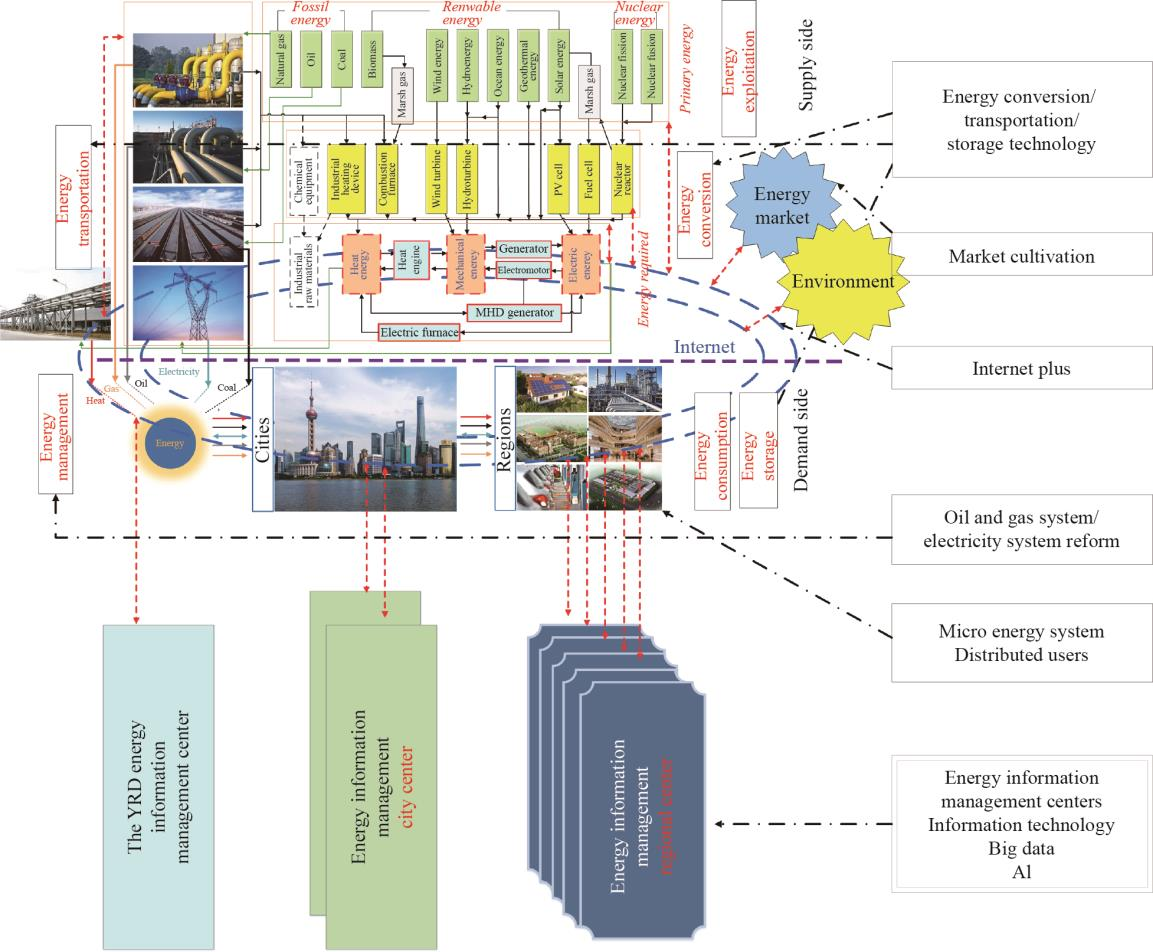
Fig.5. The modern energy system in the YRD region.
《5 Benefit analysis of the modern energy system in the YRD region》
5 Benefit analysis of the modern energy system in the YRD region
This study uses a research method combining model prediction and qualitative analysis to analyze the economic, environmental, and social benefits brought about by the construction of the modern energy system to explore the role of modern energy system construction in promoting the economic and social development of the YRD region.
《5.1 Economic and environmental benefits》
5.1 Economic and environmental benefits
The prediction model of energy demand and carbon emissions is based on the LEAP model, which the Stockholm Environment Institute developed. In this study, four different integrated scenarios for the YRD region were set based on the region’s development plan: business as usual (BAU) scenario, low carbon scenario (LCS), enhanced low carbon scenario I (ELCS I), and enhanced low carbon scenario II (ELCS II). The BAU scenario continues its current development in the YRD region. The LCS aims to adjust the industrial structure based on the BAU scenario and promote low-carbon development under the current policy. ELCS I and II promote the construction of a modern energy system with different efforts based on the LCS. This study aims to predict the energy demand and carbon emissions of the YRD region in the year 2020–2050 considering the year 2015 as the base period and combining it with actual data from 2016 and 2017. The data used in this study are mainly derived from national, provincial, and municipal statistical yearbooks, development plans, industry statistics, industry-special plans, and relevant data from field surveys [6,11–16]
5.1.1 Energy demand and structure
Fig. 6 shows the total energy demand in different scenarios. The total energy demand of the YRD region in 2035 will be 9.5×108 tce, 8.4×108 tce, and 8.2×108 tce for the LCS, ELCS I, and ELCS II, respectively, with 18.2%, 27.9%, and 29.3% decrease compared to the BAU scenario. The total energy demand in 2050 will reach 1.07×109 tce, 9.4×108 tce, and 9.1×108 tce for the LCS, ELCS I, and ELCS II, respectively, with a respective decrease of 30.2%, 39.4%, and 40.5% compared to the BAU scenario. Compared with the BAU scenario, the fossil energy demand in 2035 will decrease by 26.0%, 42.1%, and 55.5% for the LCS, ELCS I, and ELCS II, respectively, which in 2050 will decrease by 40.8%, 57.9%, and 73.7% for the LCS, ELCS I, and ELCS II, respectively. The difference in fossil energy demand under different scenarios is primarily due to the development and utilization of renewable energy in the YRD region. Therefore, the future growth of energy demand in the YRD region will slow down significantly, and the fossil energy demand will drop significantly through the construction of the modern energy system.
《Fig.6》
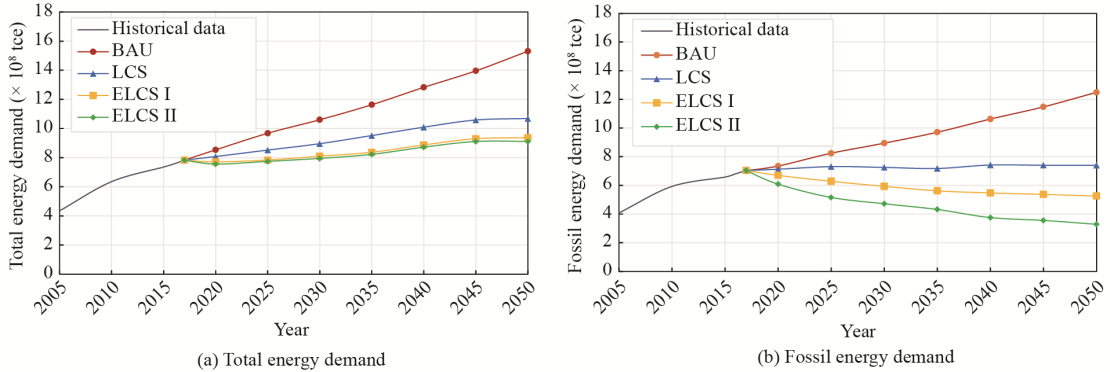
Fig.6. The total energy demand of the YRD region.
Fig. 7 shows the energy structure for different scenarios. The energy structure of the YRD region is optimized through the continuous innovation of the energy technology and the promotion of relative policies. The proportions of coal, oil, natural gas, local non-fossil energy, and external electricity in the YRD region will be 49.3%, 21.3%, 12.8%, 9.1%, and 7.4% under the BAU scenario in 2035, which will be 23.9%, 15.2%, 13.4%, 35.9%, and 11.7% in 2035, and 9.3%, 9.5%, 17.3%, 50.2%, and 13.7% in 2050 under ELCS II.
《Fig.7》
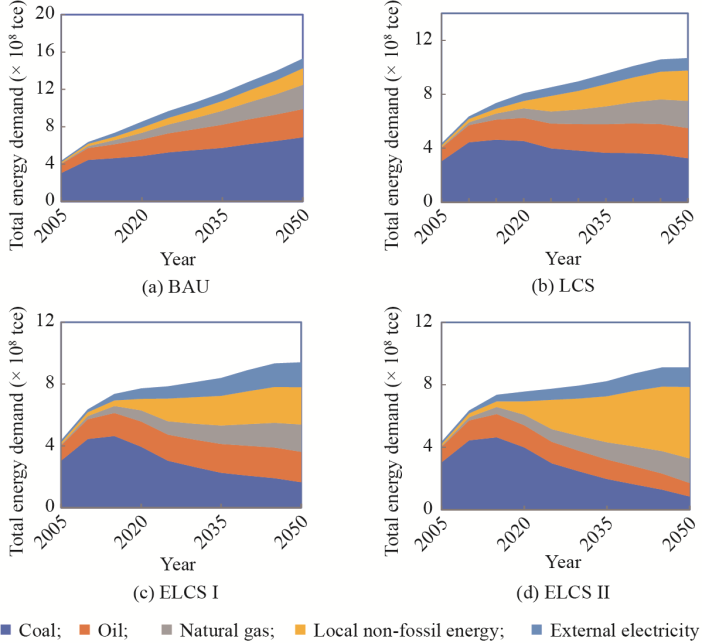
Fig.7. The energy structure of the YRD region.
5.1.2 Carbon emission
Fig. 8 shows the prediction of the carbon emissions of the YRD region from 2020–2050. Under LCS, ELCS I, and ELCS II, the total carbon emissions will decrease to varying degrees in the future. For example, the total carbon emission will decrease to 6.8×108 t under ELCS II. Compared to 2005, carbon emissions per GDP will decrease by 60.4%, 70.1%, 76.9%, and 79.9%, respectively, under four different scenarios, namely, BAU, LCS, ELCS I, and ELCS II, indicating that the commitment (reducing carbon intensity by 60% to 65% in 2030 compared to 2005) in the Paris Climate Agreement can be achieved. Combined with the prediction of carbon emissions, the goal of peaking carbon emissions under the BAU scenario cannot be achieved soon. Therefore, it is necessary to promote the construction of a modern energy system in the YRD region by enhancing energy technology, improving energy efficiency, optimizing energy structure, and innovating energy coordination mechanisms to achieve emission reduction and peaking carbon emissions in advance.
《Fig. 8》

Fig. 8. Carbon emission prediction of the YRD region under different scenarios from 2020–2050.
《5.2 Social benefits》
5.2 Social benefits
Under the traction of the national strategy of high-quality integrated regional development of the YRD region, economic and social development put forth new demands on the energy system, which urgently requires an energy revolution; however, promoting the energy revolution in the YRD region and building a modern energy system will promote the innovative development of the economy and society and bring significant social benefits in the YRD region.
According to the construction concept of the modern energy system, three provinces and one city in the YRD region can jointly formulate an integrated energy development plan to realize the rational distribution of energy collection, conversion, transportation, trading, storage, and consumption; the co-construction and sharing of energy infrastructure; the mutual assistance of energy supply in the region; and the promotion of digitalization, informatization, and intelligence of the entire energy system. Therefore, the construction of the modern energy system can break the interprovincial and industry barriers in the YRD region, making an important contribution to the development of regional integration.
The deep integration of the energy technology and information technology in modern energy systems can not only drive the development of an advanced energy technology but also promote innovations of big-data technology, AI technology, and sensor technology in the energy field. For the construction of a modern energy system, a new energy market transaction system with flexible participation and competition will be formed. The business operations of the energy market will be continuously innovated, promoting the cultivation of a unified market in the YRD region. At the same time, the promotion of the technology and market will inculcate a developed sense in all energy users in terms of using rational energy, consciousness about energy conservation, and environmental awareness, thereby improving the civilization of the YRD region.
《6 Policy suggestions 》
6 Policy suggestions
《6.1 Top-level layout and enhanced guidance》
6.1 Top-level layout and enhanced guidance
The top-level design of the energy revolution in the YRD region must be performed well. It is suggested that the YRD should establish a unified energy leadership agency in the region, formulate an energy integrated development plan, build and improve the power grid and natural gas pipeline network and other infrastructure, build a unified, multi-energy synergetic energy management information platform, and hold the ecological conservation redline. Relying on the Eco-Green Integrated Development Demonstration Zone in the Yangtze River Delta, the YRD region should build an energy integrated development demonstration zone, promote the construction of the modern energy system, and summarize and gradually expand the construction experience. Based on the initial power integration in the demonstration zone, more energy types and new energy management models are introduced to develop energy cooperation from a single project to comprehensive and in-depth integrated cooperation.
《6.2 Deepening energy system reform and cultivating energy market》
6.2 Deepening energy system reform and cultivating energy market
It is necessary to focus on breaking down industrial and inter-provincial barriers to deepen the reform of the energy system and achieve interconnection, multi-energy synergy, and optimum operation. It is recommended that the YRD should adhere to the direction of energy market reforms, implement reforms in key issues, establish and improve regional energy coordination and compensation mechanisms, break energy management system barriers, and enhance the mutual assistance of energy supply in the YRD region. It is necessary to vigorously cultivate the energy market and establish an energy pricing mechanism to realize the optimal allocation of energy resources. It can promote electric power reform in the YRD region to establish an open and unified power market, rationally promote transmission and distribution pricing, and facilitate direct transactions between power users and power generation enterprises. The improvement of the peak and valley price of electricity can be achieved through various measures, such as encouraging the use of smart homes, subsidies for household photovoltaic cells, and energy storage systems to ensure the safety of the power supply in the YRD region. Moreover, the clean energy price mechanism and consumption policy also need to be improved in the YRD region.
《6.3 Implementing Internet Plus Smart Energy to promote high-quality energy development》
6.3 Implementing Internet Plus Smart Energy to promote high-quality energy development
The construction of a modern energy system in the YRD region should be promoted to achieve the Internet Plus Smart Energy strategy. It is recommended that the YRD seize the opportunities for technological development, promote the informatization of a multi-energy synergetic energy system, research the in-depth integration of energy and information flow, study the construction of energy integration in the YRD region with data sharing, standard protocols, and data interfaces, and promote the application of the big-data technology and AI technology in the energy system. The YRD region can develop various micro-energy systems and accelerate the construction of the regional government–industry–university–research–application integrated technological system and innovation capabilities based on the advantages of scientific research in the YRD region. The focus should be placed on the core technology of micro-energy systems and actively exploring micro-energy system demonstration projects. Exploring the construction of distributed energy microgrids according to local conditions to provide a useful demonstration of the modern energy system building in the YRD region is essential. Relying on the strong foundation of energy equipment manufacturing in the YRD region, it can further master core technologies of gas turbines, ultra-supercritical power generation, nuclear power, hydrogen energy, and fuel cells, thereby reducing the equipment manufacturing cost of wind and photovoltaic power, and realize the transition of energy storage from R&D demonstration to the initial stage of commercialization and then to the large-scale application. Therefore, the energy industry in the YRD region promoting the quality, efficiency, and power transformations will lead to high-quality development of the national energy industry.
《6.4 Increasing investment and establishing energy technology venture capital funds》
6.4 Increasing investment and establishing energy technology venture capital funds
It is recommended that the YRD region establish venture capital funds focused on energy technology to support advanced technologies. The funds can be set up in the form of equity participation, which can not only effectively reduce the risk of companies in the development of cutting-edge or disruptive technologies but also obtain investment income from energy projects, forming the continuous cultivation ability of significant projects. Encouraging more social funds in the research and development of the energy technology to create a market guarantees the innovation of energy technologies.
《7 Conclusion》
7 Conclusion
At present, we are in an era when the third industrial revolution and the fourth industrial revolution overlap. At the same time, new technology wave tides emerge continuously; thus, the energy revolution in the YRD region must deeply reflect the characteristics of this era. Building a modern energy system in the YRD region can improve the efficiency and emission of the energy system through the advanced energy technology and environmental technology, recognize the intelligence of energy systems through the big data and AI technology, cultivate the regional energy market through the reform of energy management, and finally build a clean, low-carbon, safe, and efficient energy system in China.

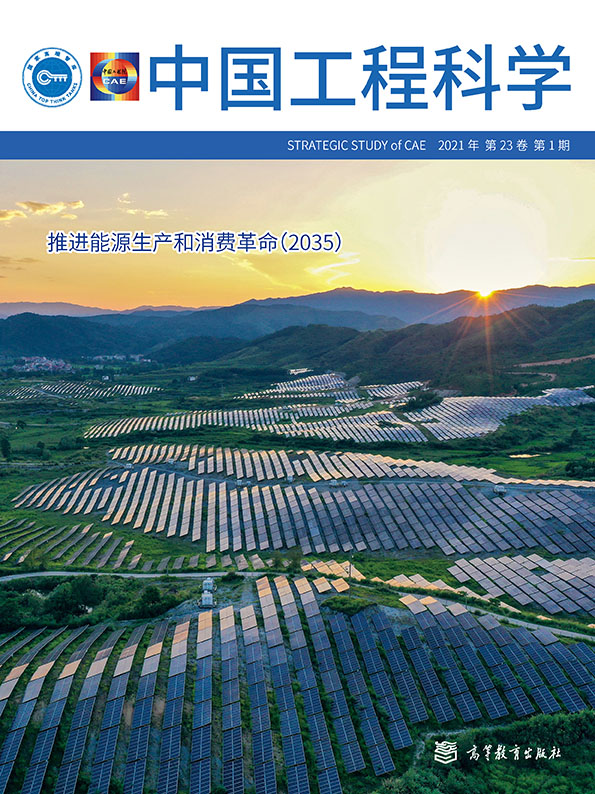











 京公网安备 11010502051620号
京公网安备 11010502051620号




